Star Formation Shapes the Appearance of the Universe and Provides the Sites for Planets
| The Star Formation Process | "We had the sky, up there, all speckled with stars, and we used to lay on our backs and look up at them, and discuss about whether they was made, or only just happened." - Mark Twain, Huckleberry Finn |
Key points: How star formation starts; role of gravity; circumstellar disks; upper and lower mass limits for stars
Stars form in the centers of dense molecular clouds![]() .
.
Generally speaking, we think most star formation proceeds along the same lines:
Step 1: initial collapse of an interstellar cloud
|
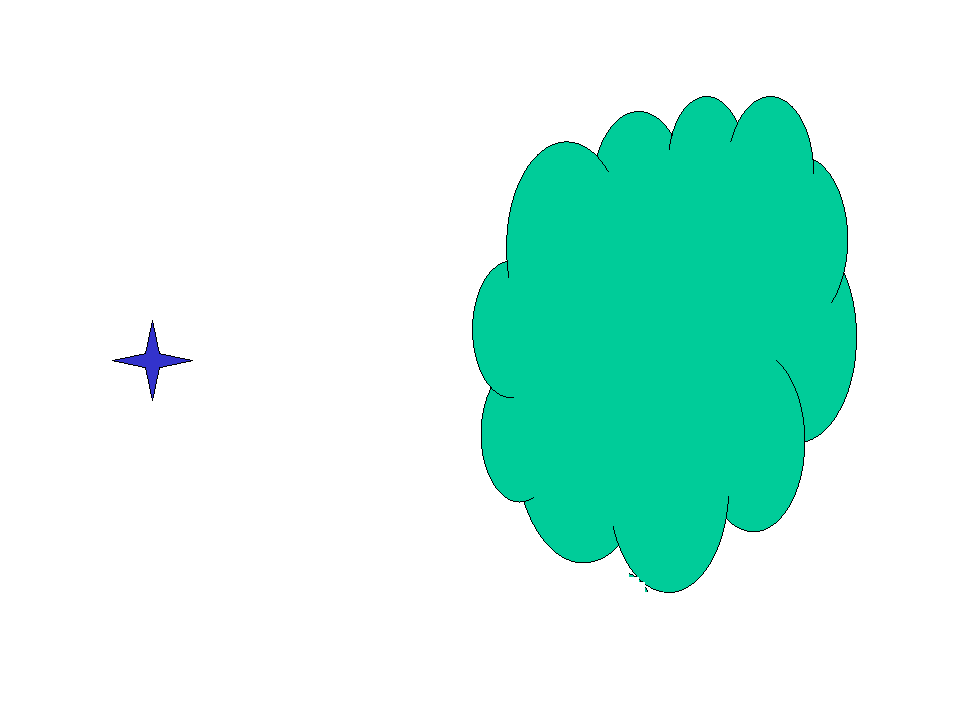 |
Step 2: the cloud fragments into
clumps that form individual stars ![]() . The fragmentation is
related to turbulence in the collapsing cloud. (from Matthew Bate, http://www.astro.ex.ac.uk/people/mbate/Research/pr.html)
. The fragmentation is
related to turbulence in the collapsing cloud. (from Matthew Bate, http://www.astro.ex.ac.uk/people/mbate/Research/pr.html)
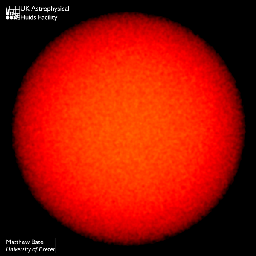 |
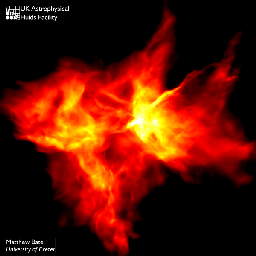 |
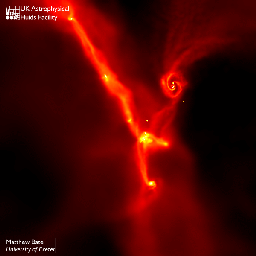 |
| A typical interstellar cloud is supported against collapse by internal turbulent motions. | Once such a cloud is "tipped over the edge" and starts to collapse, it reaches a state where gravity can pull the gas together to form dense "cores". | These cores continue to collapse, often fragmenting further, until they form star - sized clumps. |
Step 3: The clumps collapse into a stars
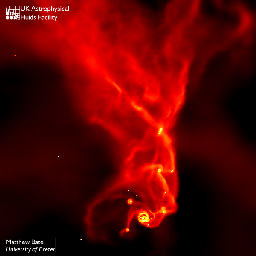 |
Once the force of gravity becomes larger than the pressure
supporting the clumps, their collapse happens very fast. Eventually the gas gets sufficiently compressed that it is dense and hot enough that the pressure balances the gravitational force, and the collapse stops. This situation is similar to the hydrostatic equilibrium we discussed for the sun. We call these objects "protostars." |
| This image of the massive star forming region RWC 49 shows a
real-life ending to step 3 above. Stars have formed in the core of a molecular cloud and
they have blown a hole in the cloud. You can see them glowing blue inside the hole. The
remains of the cloud are heated by the new stars and glow pink. The image was obtained
with the IRAC instrument on Spitzer, and ranges from 3.6 microns (blue) to 8 microns
(red). Because it is an infrared image, we can see through the foreground dust that blocks
our view in the visible region. (from Spitzer Science Center, http://www.spitzer.caltech.edu/Media/mediaimages/data.shtml)
|
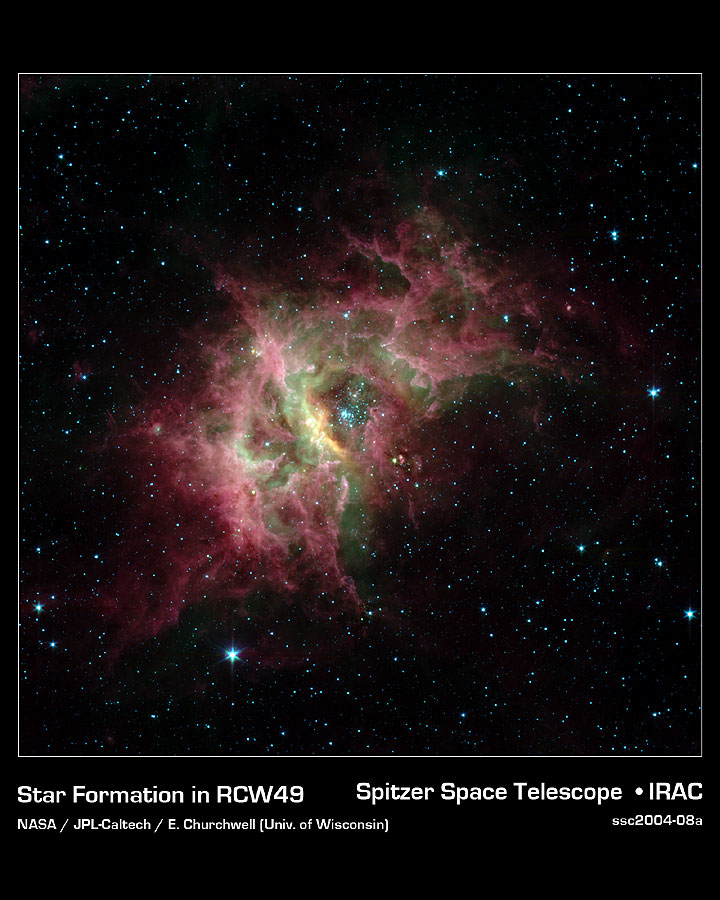 |
| These pictures show some examples of these disks and jets (illustrations and animation from STScI) | |
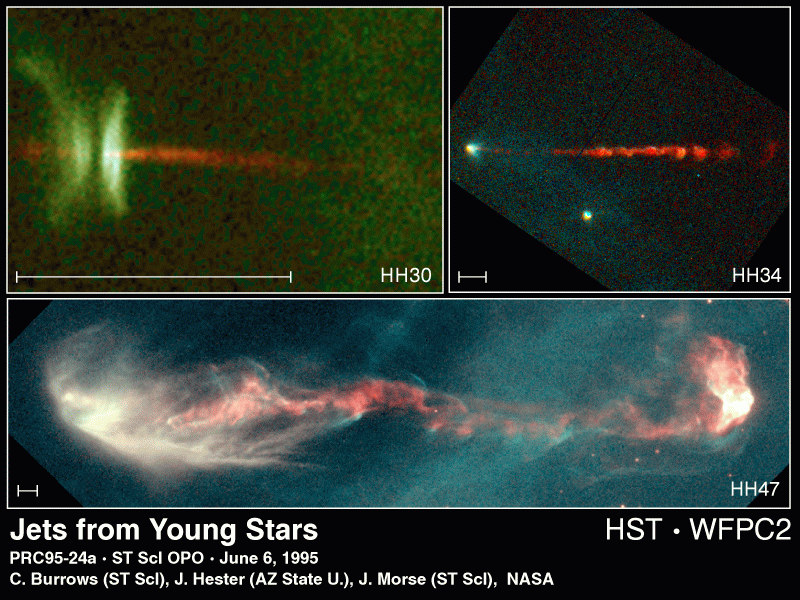 |
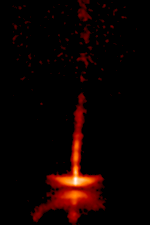 |
| Here is an animation of a theoretical model
of a protostellar jet like the one from HH47 above. The material in the jet
cools rapidly, causing it to break up into clumps and "bullets".
(From Jim Stone,
http://www.astro.princeton.edu/~jstone/pjets.html)
|
 |
Fly through the Orion Nebula again and watch for some of these stages of star
formation! ![]()
| Here is a summary (From TheEssential Cosmic Perspective, by Bennett et al.) | 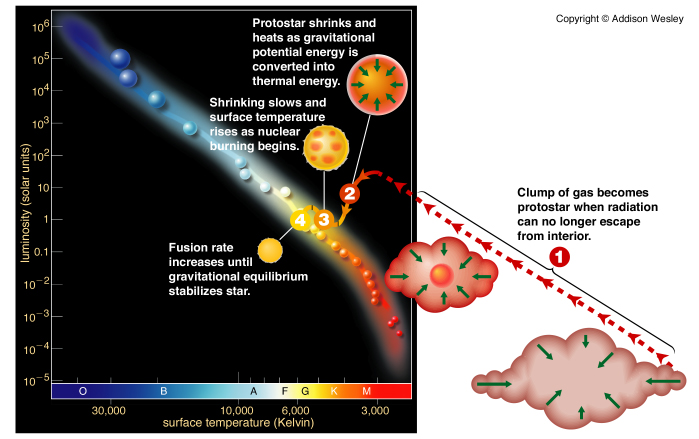 |
If the cloud has M < .08 M![]() , it will contract, heat up, but the central temperature will never
reach the 10,000,000oK limit required to start the conversion of H to He. The
outer layers get warm, enough to appear similar to cool, dim stars for a few million
years, but after that they steadily fade away. Such objects are called brown dwarfs. See
the tracks on the HR diagram above labeled 0.01 M
, it will contract, heat up, but the central temperature will never
reach the 10,000,000oK limit required to start the conversion of H to He. The
outer layers get warm, enough to appear similar to cool, dim stars for a few million
years, but after that they steadily fade away. Such objects are called brown dwarfs. See
the tracks on the HR diagram above labeled 0.01 M![]() and 0.001 M
and 0.001 M![]() .
.
If the mass of the cloud exceeds about 100 M![]() , it will collapse and heat up very
quickly. Nuclear reactions occur so rapidly that the star becomes very luminous and blows
itself apart -- either catastrophically or more gently by blowing off only the outer
layers.
, it will collapse and heat up very
quickly. Nuclear reactions occur so rapidly that the star becomes very luminous and blows
itself apart -- either catastrophically or more gently by blowing off only the outer
layers.
Consequences of star formation
Star formation "makes the Universe go 'round." In the following pages, we discuss some of the reasons.
Test your understanding before going on![]()
|
Pillars in M16, NASA, HST, J. Hester, P. Scowen, APOD http://antwrp.gsfc.nasa.gov/apod/ap951106.html |
|
|
Click to return to syllabus |
||
| Click to return to Interstellar Medium | hypertext |
Click to go to Formation of the Solar System |